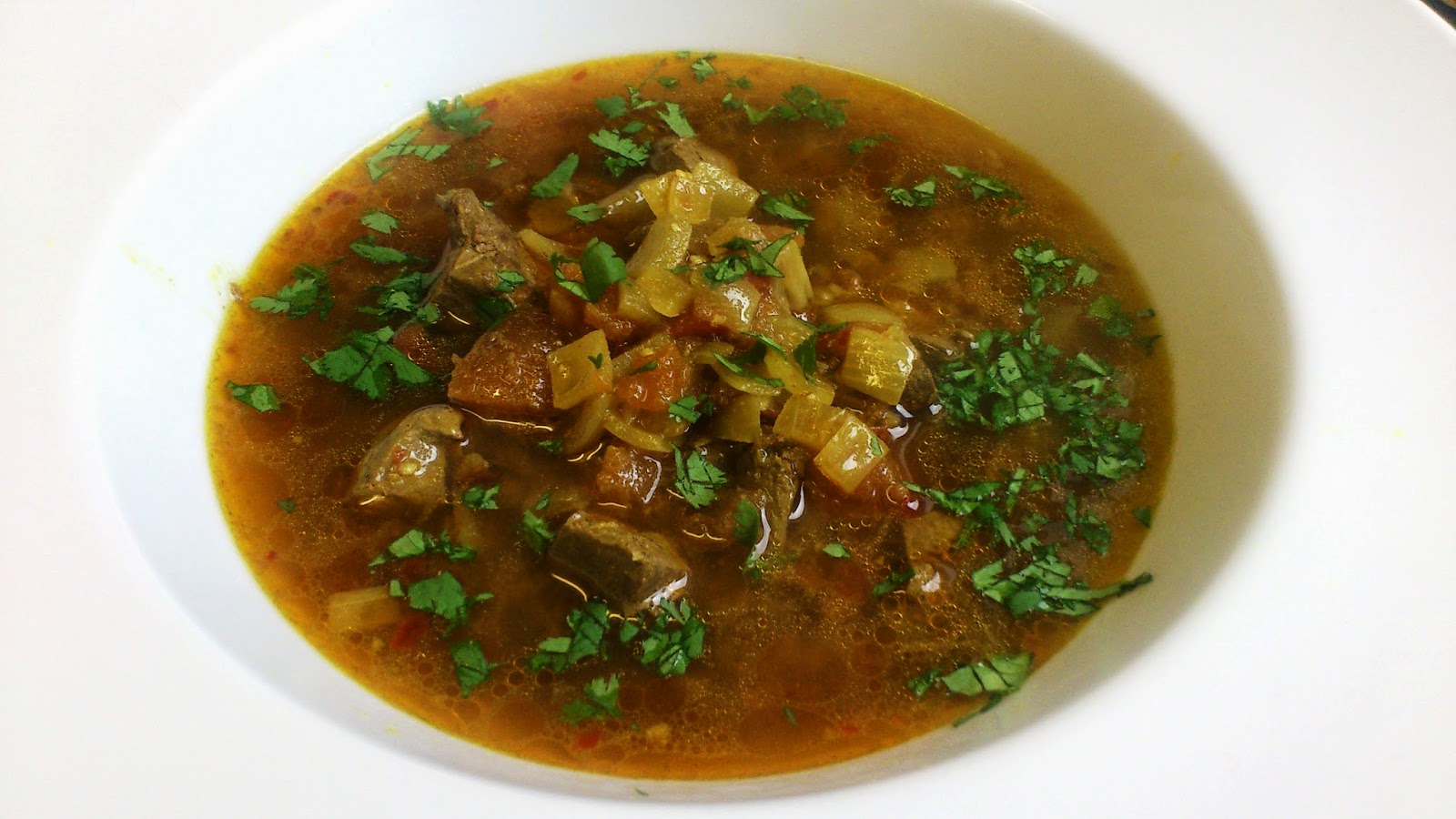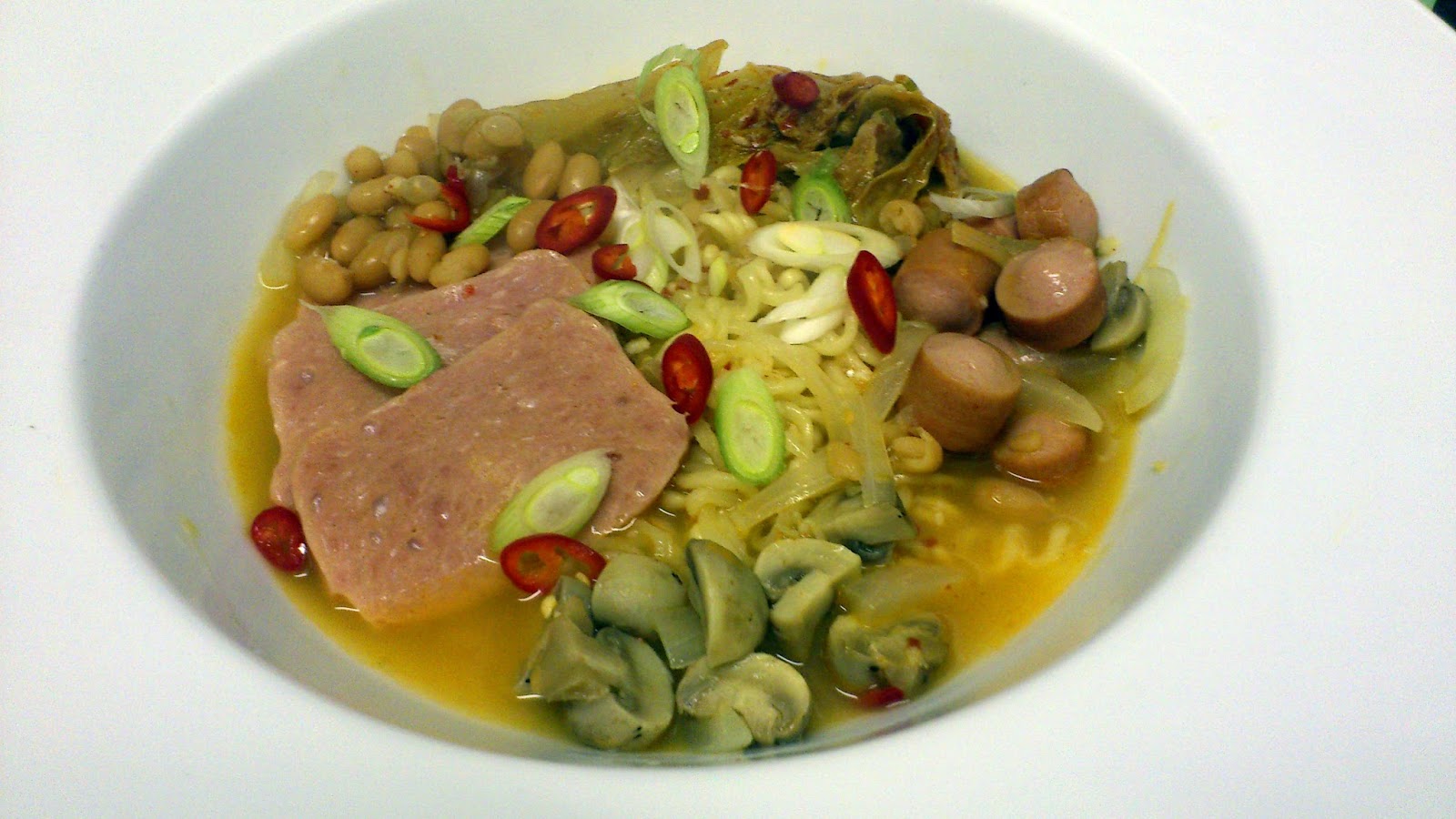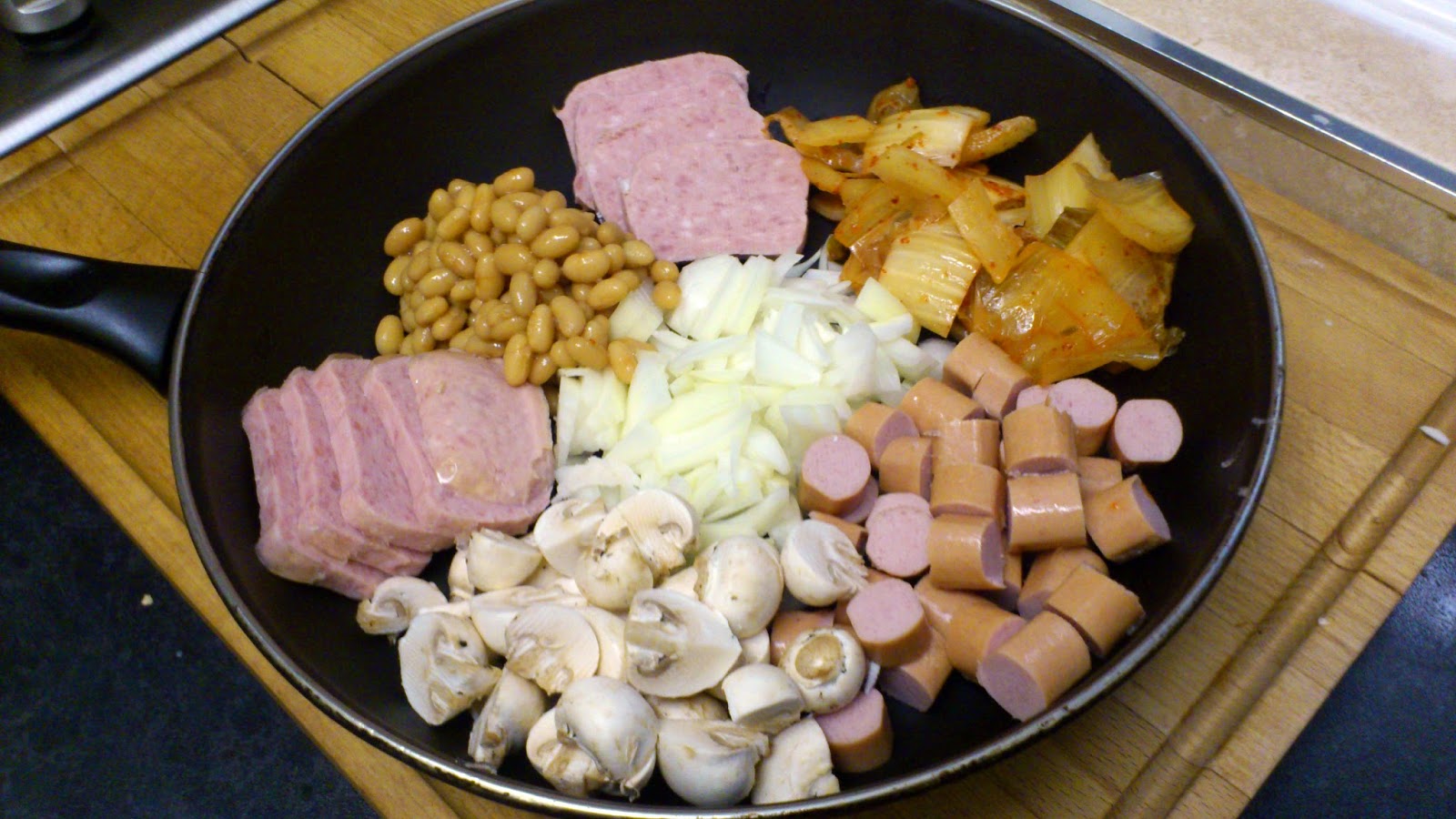Inspiration for soups comes from many places. For this one it was as simple as Mrs Soup telling me that she fancied a soup with eggs poached in it. So off I went to the interwebs to do a bit of research and that's where I came across this amazingly tasty and simple little number. I've always been taken with the idea of roasting whole bulbs of garlic, as it smells and tastes wonderful - a flavour that I've never experienced with anything you can buy in the shops. And rather brilliantly, roasting the garlic until it's caramelized takes away the garlic-y smell and the harshness of raw garlic flavour, leaving a deep and savoury taste that's perfect in soups.
Add to the garlic flavour some poached eggs - I used a chef's ring to stop the egg from spreading everywhere and it came out just perfectly - and some chorizo and I found this soup to be one of the tastiest that I've blogged for a good while.
And whilst we are on the subject of chorizo, do you pronounce it 'cho-ritz-oh' or 'chore-ee-tho'? For some reason the latter makes any non-spanish person sound like a pretentious hipster. And before you start telling me off for pronouncing foreign words incorrectly, bare in mind that English people still can't settle on a correct pronunciation of the word 'scone' (It rhymes with bone, not gone as any fool knows) So, if any actual Spanish people care to weigh in, I'll totally respect their decision, but still pronounce it my 'chor-itz-oh' when no-one's listening.
Also, is it pronounced 'see-a-bata' or 'chee-a-bata'?
Also, this has totally reminded me of Moss from the IT Crowd - "It's pronounced tay-pass"
Anyway, on to the soup...
Ingredients
3 Bulbs of Garlic
70g Chorizo
1l Chicken Stock
100ml Dry Sherry
2 Ciabatta Rolls
4 Eggs
1tbsp Sweet Paprika
1/2tbsp Smoked Paprika
1tsp Fresh Thyme
Salt and Pepper
Method
1. Heat the oven to 200ºc. Peel the outer layers of the garlic bulbs and then slice the top off, so you can see the tops of all the individual cloves. Place the bulbs in an oven proof dish and pour a glug of olive oil over the top.
2. Put the garlic bulbs in the oven and cook for 30 minutes, until they are golden brown and caramelized on the top. Remove from the oven and allow to cool. Squeeze the cooked garlic from its skins into a dish. This can get pretty messy...
3. In your soup pan, heat some more olive oil. Cut the chorizo up into small chunks and gently fry for 3-5 minutes, then add the garlic puree, paprika and thyme. Cook for another 2 minutes and then add the sherry. Allow the liquid to reduce slightly, then add the chicken stock. Bring the pan to a simmer, cover and cook for 25 minutes
4. Cut the ciabatta into slices and toast until golden, then place a few slices in each soup bowl
5. Poach the eggs gently in the soup for 4 minutes, then place one in each soup bowl, then ladle the soup over the top. Serve and enjoy!
















































